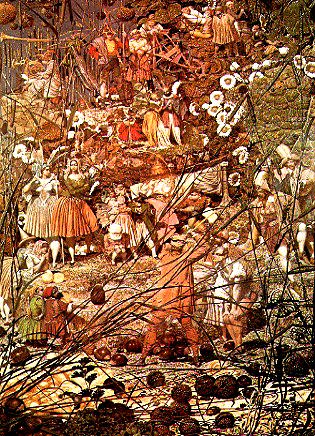
3000 BCE
Waves of invasion leave Ireland under the control of the
Fomorians and Firbolgs (races of ogres, goblins, troll, etc)
1500 BCE
The Tuatha Danaan,faeries who worshipped the goddess Dana, arrive from the east. After a brief co-existence, the Tuatha wage war against the goblins. They are destroyed and driven into the remote islands of western Ireland.
1000 BCE
Humans arrive and destroy the Tuatha.Most flee to the Blessed Isles-or Tir Na nog- becomes a faerie paradise.
Those who remain grow smaller and weaker.
900 BCE
The Tuatha take
home in the hills and waters of Ireland as the Daoine Sidhe-the little people or the poeple of the mounds-Seperated faeries spread out. British Faeries go through similiar troubles.
600 BCE
The Daoine Sidhe are defeated by Eochaid, High King
of Munester. They begin to fade away from human affairs. |
 |
|
|
|
|
|  |
|
|
 |
430-460 AD
St Patrick converts the irish to Christianity. Diminshing the old ways. 1500 AD The Nagumwasuck, a faerie tribe
attached to the Passamaquoddy Indians in the states, leave North America and are never heard from again.
1520-1610 AD
Queen Mab reigns over the British Faeries.
1560-1700 AD
Under Puiranism, faeries are seen as demons. Witch hunts persue in New England. Bad news for humans who have befriended them.
1600-1750 AD
Some European faeries travel to America and Australia with European colonists.
1830-1855 AD
Faeries sighted in the Isle of Man, they have grey skin and
blue clothing.
1800-1880 AD
European artists create images
of Faerie land portraying it as a lush, romantic scape.
1922
Sir Author Conan Doyle publish's "Cottingley's faerie"
photos.
1931 AD
Faeries seen in a garden in Warwickshire, the English Midlands.
1981
Cottingley photos are admitted to be fakes.

|
 |
|
|